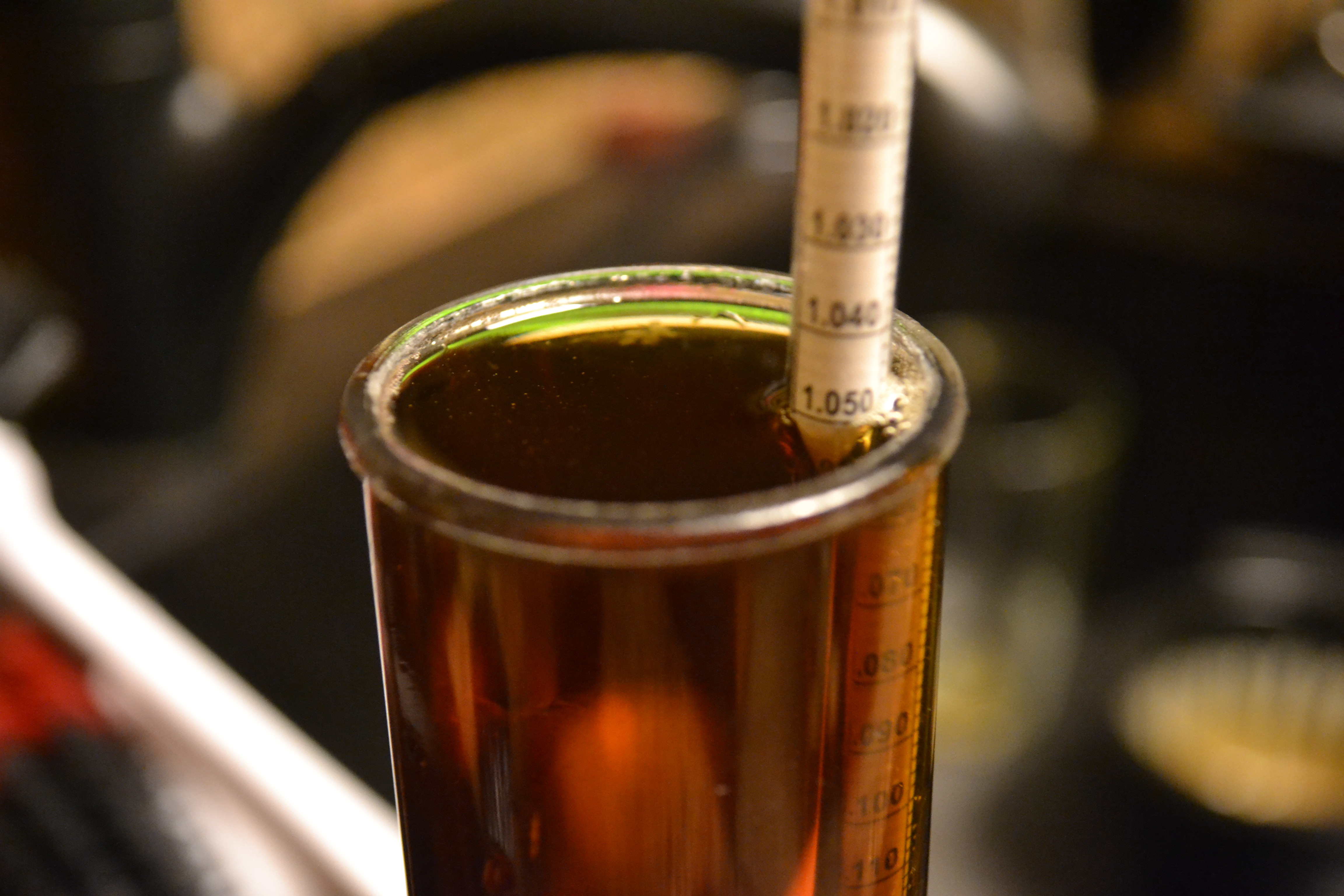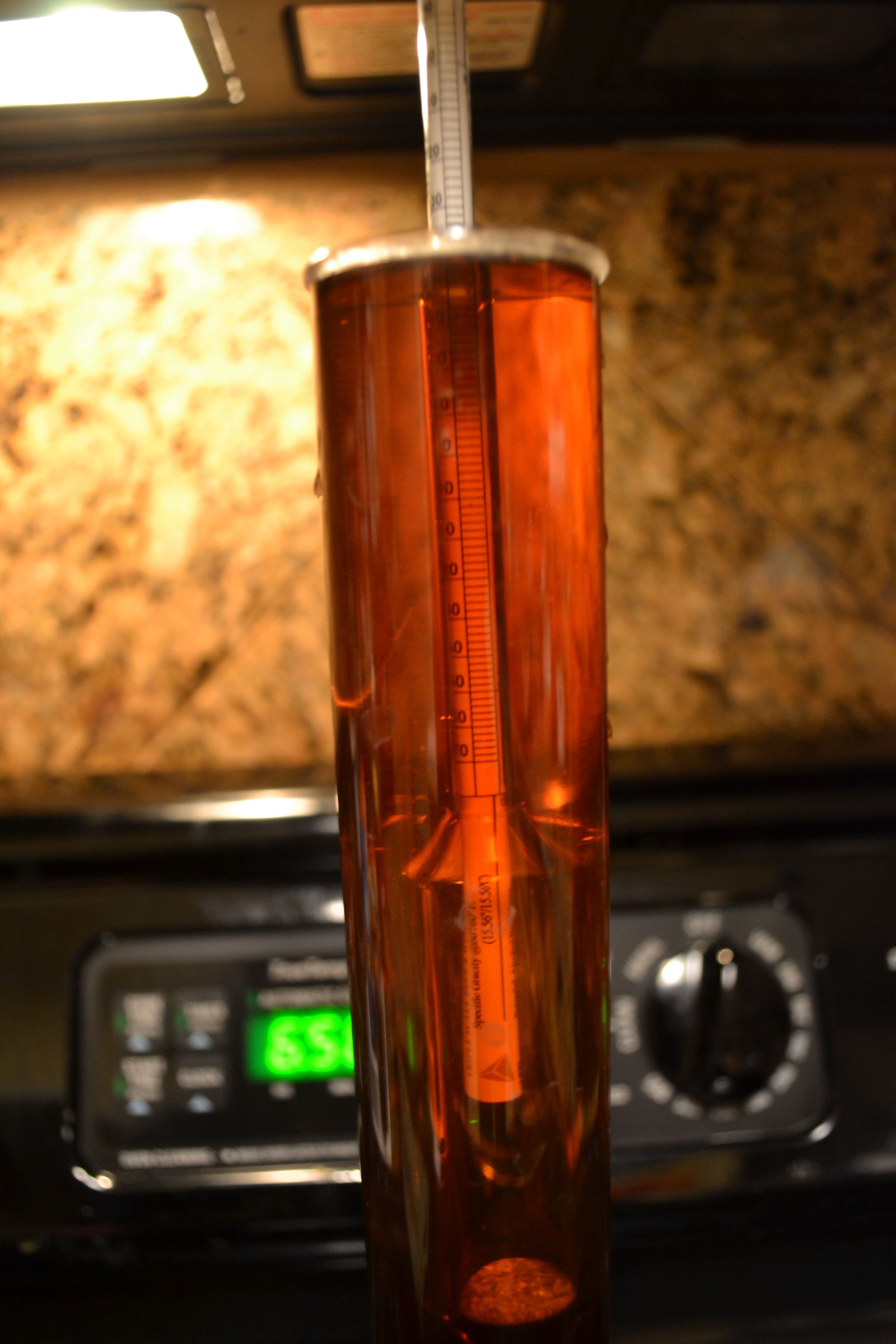- Joined
- Jan 1, 2016
- Messages
- 335
- Reaction score
- 129
I did .25 oz on the 60 min addition and the remaining .75 oz at 30 min. Didn't seem to have a harsh bitterness on the hydro sample.

Awesome, I'll adjust as I see many have. As far as the dryness and balance, I see many people talking about increasing wheat, when there is no wheat in the original recipe. Is there a verified adjunct that would help balance or is the caramel malt enough to ensure this bad boy doesn't drop to too low of a FG?
Awesome! You'll have to let us know how it comes out. I'm particularly interested in how the malts you used affected it, but it may be hard to pick that out from all the other variables. What kind of fruity flavors does the hothead strain produce? I've not done much research on it but it sounds intriguing.
What does leaving it in primary achieve for 30 days vs the typical 1-2 weeks that I've read? I am new to home brewing and made this batch once in a 1 gallon batch, but only let it sit in primary for about 2 weeks. How would this change the flavor if I let it go for the full 30? I just brewed 3.5 gallons of this again and put it in the fermenter last night. The first batch(also first beer brewed) was good and I was surprised that it was drinkable when I opened a bottle, but something just seemed a bit off. I also used Wyeast Nutrient in the first batch instead of straight DAP because the guy at the store told me it was the same thing. This time I made the caramel with DAP.
Let me get this strait..When making the caramel you don't bring it up to hard crack temp. In doing this it stays in a liquid form util time to be used? I think hard crack temp is above the 300 deg mark for a few min or something.
Interested to see how the amber 45 turns out in your batch.
Yeah, my hops were ready to pick and didn't have everything (or the time) to make the candi sugar so grabbed a couple bags of D-45. From the description sounds similar to the 290F. The color seemed pretty close to pictures posted here as well. Hoping the caramel/vanilla flavor comes thru
Any updates on the final product?
Still in primary (3 weeks as of today). Will keg later this week and report back a 5-6 days after.
Have you sampled your batch yet? I'm very interested in the D-45 addition, especially if the vanilla notes are detectable.
Sorry for the delay, took longer to get into the keggerator. Definitely has the caramel flavor. Vanilla notes are minimal at best. Delicious beer however. Would love to try making the candi syrup, but the ease of D-45 is nice. I added a drop of vanilla extract to a pint it is was excellent. I drink vanilla porters fairly often so my threshold for vanilla may be skewed. I may add a vanilla bean tincture to my second keg (I made 10 gal).
Awesome! You'll have to let us know how it comes out. I'm particularly interested in how the malts you used affected it, but it may be hard to pick that out from all the other variables. What kind of fruity flavors does the hothead strain produce? I've not done much research on it but it sounds intriguing.
My first attempt at the syrup. I think it my have come out a little over done. I did yhr 290 then added a cup and brought it back to 290. Then cooled it down with one more cup. It looks almost black. Taste kind of burnt.
My first attempt at the syrup. I think it my have come out a little over done. I did yhr 290 then added a cup and brought it back to 290. Then cooled it down with one more cup. It looks almost black. Taste kind of burnt.
From my experience, getting that kind of color in the syrup will lead you to Quad/Special B type flavors, and give you more of a winter-warmer ale flavor profile that goes well in the colder months rather than a year-round refresher. Both are good beers and legitimate takes on the recipe. The next time I do this beer, I'll probably stop my sugar at 275-280 in order to focus more on the caramel flavors and less on the plum flavors for a beer that's more refreshing than complex.
I went and made a second batch and it turned out the same. The only thing I did different this time was to leave the stove around 4 to 5 on the heat setting. The first batch I think I had it set around 7 to 8. I'll run with what I have..although I may do another batch in the lower temp ranges. Oh as the Yeast nutrient cooks does it put off an ammonia odor?
That sounds like exactly my experience with the syrup - it sounds/looks to me as though you made the 290F syrup correctly. That being said, I have no idea if 290F or a lighter or darker variant is "best" for this recipe. And yes to the DAP releasing ammonia as the solutions starts boiling.






Do you find that you are able to reach a temperature of 290F without the color getting to where it looks almost black in the jar when finished? I made the syrup twice, because I was skeptical about how dark it looked in the jar the 1st time. The second time making it, I stopped it a few degrees cooler (around 287F), and checked the color of a drop on a piece of foil just like the color chart posted in the candy syrup thread for each temp. The drop was definitely right between the 280F and 290F syrup color on that chart, but the full batch still looks nearly black when i put it all in a glass jar. I don't know what color syrup is the best for this beer having only made one batch, but I'm fairly confident that 290F should be quite dark and definitely not transparent when looking at the full batch in the glass jar. D-45 syrup is just as dark and is supposed to have a lot of caramel/vanilla flavor, rather then the raisin/plum flavors you'd get from the D-90 and darker ones. I don't think I had anything resembling quad-like flavors in my finished beer, but I'd definitely be interested to know the results if anyone has experimented with different syrup temps with this beer.
If you're doing an ingredient profile for recipe software, 15-20 SRM is probably the color range you want to tell your
That's interesting, do you mean the final SRM of the beer, or the SRM of the candy syrup? I used d-45(45SRM) and it looks very close to the OP's recipe photos, maybe a hair more red.
Enter your email address to join: